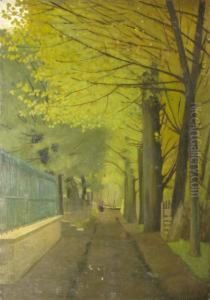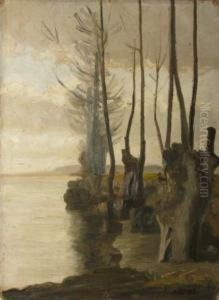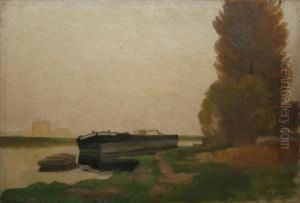A. Seguin Paintings
Armand Séguin was a French post-impressionist painter and printmaker who is best known for his involvement with the Pont-Aven School, a group of artists who gathered around the small village of Pont-Aven in Brittany, France. This group included illustrious figures such as Paul Gauguin and Émile Bernard, both of whom influenced Séguin's work.
Born on February 15, 1869, in Paris, Séguin was raised in a well-off family which allowed him the freedom to pursue his artistic interests. He initially studied at the École des Arts Décoratifs in Paris, where he developed a foundation in the decorative arts. However, his interest in painting grew, and he began to study under the Symbolist painter Gustave Moreau at the École des Beaux-Arts de Paris. It was here that he was introduced to the avant-garde movements of the time.
Séguin's work was greatly influenced by the Synthetist style, which sought to synthesize the outward appearance of natural forms, the artist's feelings about their subject, and the purity of the aesthetic considerations of line, color, and form. This approach was a departure from the naturalism and impressionism that had dominated French painting earlier in the century.
In the late 1880s, Séguin traveled to Brittany where he became an integral part of the Pont-Aven School. His encounter with Gauguin was particularly significant, and Gauguin's use of symbolism and cloisonnism (a style characterized by bold outlines and flat areas of color) had a profound impact on Séguin's style. Séguin's works from this period often featured the landscape and peasant life of Brittany, rendered with a bold and simplified use of form and color.
Despite his association with other artists, Séguin was known to be somewhat reclusive and struggled with financial instability and health issues throughout his life. He continued to paint and create etchings, exhibiting his work in Paris and gaining some recognition among his peers.
Armand Séguin died on December 4, 1934, in Paris. Although he never achieved the same level of fame as some of his contemporaries during his lifetime, his work has since been recognized for its contribution to the post-impressionist movement and its role in the development of modern art. Séguin's prints and paintings are now collected and exhibited in museums around the world, offering insight into the innovative and collaborative artistic atmosphere of the Pont-Aven School.


